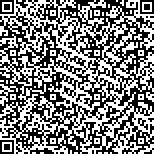|
| 中国、日本、韩国胃癌疾病负担变化及预测分析 |
| Comparative analysis of gastric cancer in China, Japan, and South Korea: profiles, change in disease burden, prediction of the future trend |
| 投稿时间:2025-01-10 修订日期:2025-04-08 |
| DOI: |
|
 |
| 中文关键词: 胃癌 疾病负担 中国 日本 韩国 预测 |
| 英文关键词:gastric cancer disease burden China Japan South Korea prediction |
| 基金项目: |
|
| 摘要点击次数: 99 |
| 全文下载次数: 0 |
| 中文摘要: |
| [目的]对比分析中国、日本、韩国三国胃癌流行情况、疾病负担及变化趋势预测,从而为降低胃癌疾病负担提供更多基础信息。[方法]数据来源于公开数据库。利用全球疾病负担(Global Burden of Disease, GBD)数据库中1990~2021年中日韩的标化发病率、标化死亡率、发病粗率、死亡粗率以及伤残调整寿命年率数据,采用Joinpoint软件进行回归分析,计算疾病负担的趋势变化,自回归移动平均模型(autoregressive integrated moving average model, ARIMA)对2022-2031年发病、死亡情况进行预测。[结果]2021年,中国胃癌发病和死亡例数分别为611,799例和445,013例,标化发病率和死亡率分别为29.05/10万和21.51/10万, 均显著高于日韩。中国男性胃癌标化发病率(44.48/10万)与标化死亡率(32.61/10万)均为三国最高,远超日本(38.77/10万;20.26/10万)和韩国(38.98/10万;20.50/10万)。女性群体中,中国新发病例数居首但标化发病率(15.23/10万)略低于韩国(15.57/10万),高于日本(14.66/10万),而死亡标化率(12.02/10万)仍显著高于日(7.64/10万)、韩(8.08/10万)。1990~2021年中日韩三国胃癌的标化发病率、标化死亡率及DALY率均在下降,但中国降幅显著滞后于日韩,韩国在所有指标上均呈现最快下降速度。ARIMA模型预测显示,2022~2031年间三国疾病负担呈现显著差异,中国和韩国胃癌标化发病率持续下降,至2031年预计分别降至22.87/10万和12.45/10万,而日本则逆势上升至26.55/10万;三国标化死亡率同步下降,2031年预计分别为13.71/10万(中国)、10.44/10万(日本)和9.08/10万(韩国)。[结论]在中日韩三国中,胃癌的疾病负担仍然相当严峻,比较分析结果表明我国胃癌标化发病率和标化死亡率最高,1990~2021年中国胃癌的标化发病率、死亡率及DALYs率在中日韩三国中下降幅度最小。这提示我国对于胃癌筛查与早诊早治问题应进一步提高关注。 |
| 英文摘要: |
| [Objective] Comparative analysis of the epidemiology, disease burden and predicted changing trends of gastric cancer in China, Japan and South Korea, so as to provide more basic information for reducing the burden of gastric cancer. [Methods] The data are sourced from public databases. Using the age-standardized incidence rate (ASIR), age-standardized mortality rate (ASMR), crude incidence rate (CIR), crude mortality rate (CMR) and disability-adjusted life years (DALYs) of China, Japan and South Korea from 1990 to 2021 in the Global Burden of Disease (GBD) database, joinpoint software was employed for regression analysis to analyze the trend changes of the disease burden. Autoregressive integrated moving average model (ARIMA) was applied to predict incidence and mortality from 2022-2031. [Results] In 2021, China had 611,799 new gastric cancer cases and 445,013 deaths, with ASIR at 29.05/105 and ASMR at 21.51/105, both higher than in Japan and South Korea. In China, the ASIR (44.48/105) and ASMR (32.61/105) of gastric cancer among men are the highest among the three countries, surpassing those in Japan (38.77/105; 20.26/105) and South Korea (38.98/105; 20.50/105). Among the female population, China has the largest number of new cases, but the ASIR (15.23/105) is slightly lower than that of South Korea (15.57/105) and higher than that of Japan (14.66/105), but ASMR (12.02/105) was still higher than those of Japan (7.64/105) and South Korea (8.08/105). From 1990 to 2021, the ASIR, ASMR and DALY rate of gastric cancer all declined in China, Japan and South Korea, with China exhibiting slower reductions and South Korea demonstrating the steepest declines across all indicators. The ARIMA model prediction shows that there will be significant differences in disease burden among the three countries from 2022 to 2031. The ASIR of gastric cancer in China and South Korea will continue to decline and are expected to fall to 22.87/105 and 12.45/105 respectively by 2031, while that in Japan will rise to 26.55/105. The ASMR of the three countries will decline synchronously and are expected to reach 13.71/105 (China), 10.44/105 (Japan) and 9.08/105 (South Korea) in 2031. [Conclusion] The disease burden of gastric cancer remains significant in China, Japan and South Korea. Comparative analysis shows that China has the highest ASIR and ASMR. The ASIR, ASMR and DALY rate of gastric cancer in China decreased the least among China, Japan and South Korea from 1990 to 2021. This suggests that further attention should be paid to gastric cancer screening and early diagnosis and treatment in China. |
|
在线阅读
查看/发表评论 下载PDF阅读器 |
|
|
|